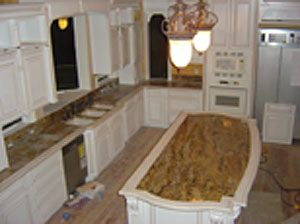
Step 1.
For a recent upscale residential project, we did a travertine edge detail that was laminated upside down, cove smoothed to bullnose, seamed and surfaced polished. The travertine used was from Mexico, while granite was the Golden Ray. The detail was selected by a designer that we had worked with in the past, and had a portfolio of extremely high-end projects with innovative stonework.
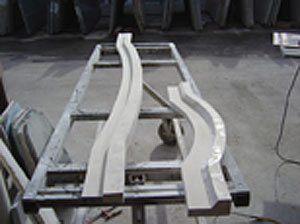
• The first step was to shape our liners, laminate them and begin to carve out the inside cove (see Step 1).
• We put sheet metal down on the surface so we wouldn’t damage the top of the travertine, and as we finished the upside down bullnose, we just smoothed the cove in with the surface.
• We then fit the travertine pieces and laminated them to the Golden Ray (see Step 2). It was then glued together (see Step 3), and loaded for transport to the jobsite (see Step 4) for installation.
Although the undermount sink was close to the liner, there were no issues during the installation.
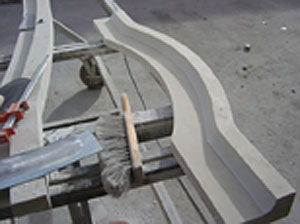
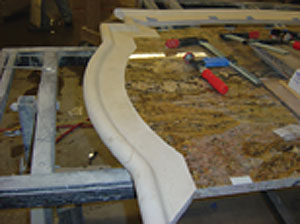
Step 2.
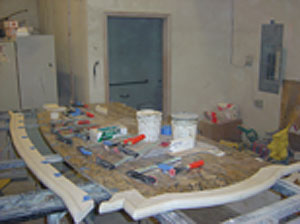
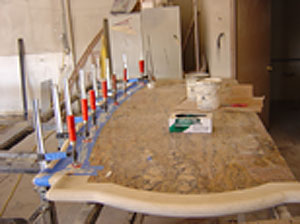
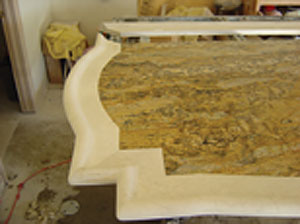
Step 3.
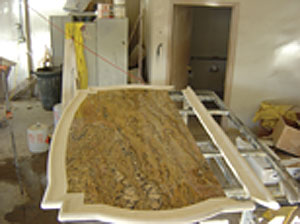
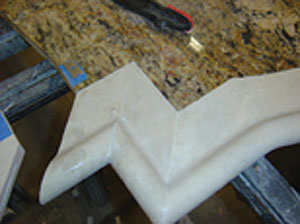
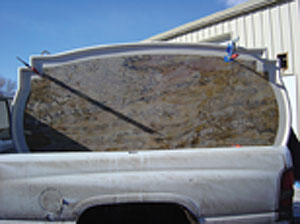
Step 4.
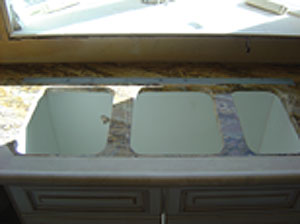
Although the undermount sink was close to the liner, there were no issues during the installation.

Travis Stout, the fabricator of the project, wanted to complete the job so a CNC would never touch the workpiece.
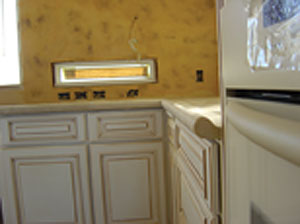
In the end, the finished edge resembles an “upside down bullnose.”
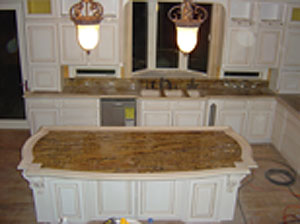
The combination of Mexican travertine and Golden Ray granite was selected by a designer that we had worked with in the past, and had a portfolio of extremely high-end projects with innovative stonework.
